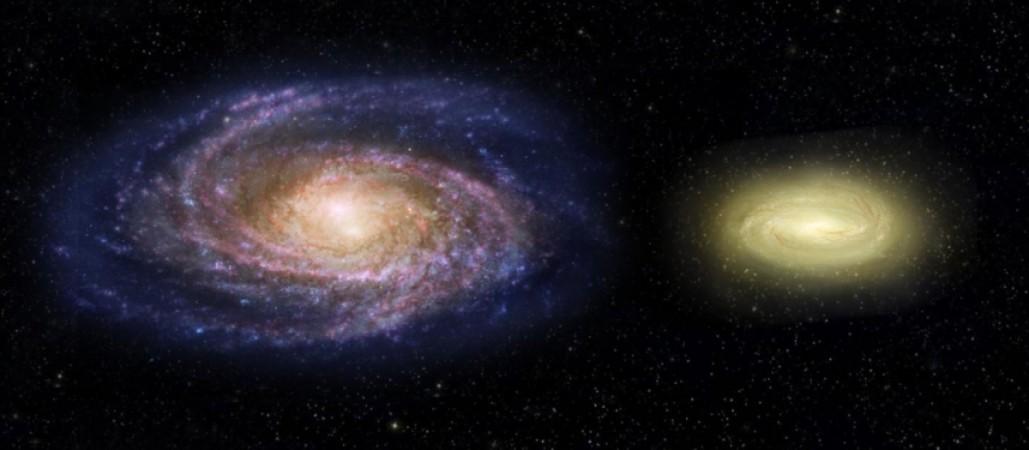
NASA's Hubble lately found a compact disk-shaped galaxy with the help of a "natural lens" in space. This is the first massive and fast spinning galaxy that stopped producing stars a few billion years after the Big Bang took place.
Also Read: Top 5 asteroids that made headlines
According to the researchers, the discovery of such a galaxy challenges the present understanding of massive galaxies to form and evolve.
When the image of this galaxy was clicked by Hubble, the astronomers were expecting to see chaotic clusters of stars but they found stars which originated in a pancake-shaped disk.
It's the first direct observational evidence that at least some of the earliest so-called "dead" galaxies — where star formation stopped — somehow evolve from a Milky Way-shaped disk into the giant elliptical galaxies we see today.
This is a surprise because elliptical galaxies contain older stars, while spiral galaxies typically contain younger blue stars. At least some of these early "dead" disk galaxies must have gone through major makeovers. They not only changed their structure but also the motions of their stars to make a shape of an elliptical galaxy, a NASA statement revealed.
"This new insight may force us to rethink the whole cosmological context of how galaxies burn out early on and evolve into local elliptical-shaped galaxies," said study leader Sune Toft of the Dark Cosmology Center at the Niels Bohr Institute, University of Copenhagen, Denmark.
"Perhaps we have been blind to the fact that early 'dead' galaxies could, in fact, be disks, simply because we haven't been able to resolve them," Toft added.
As per the previous studies conducted about dead galaxies, they are believed to transform into a structure similar to the local elliptical galaxies. More powerful space telescopes would be required to confirm this guesstimation by the researchers.
However, through the phenomenon, known as "gravitational lensing," a massive, foreground cluster of galaxies acts as a natural "zoom lens" in space by magnifying and stretching images of far more distant background galaxies. By joining this natural lens with the resolving power of Hubble, scientists were able to see into the center of the dead galaxy.
The remote galaxy is three times as massive as the Milky Way but only half the size. Rotational velocity measurements made with the European Southern Observatory's Very Large Telescope (VLT) showed that the disk galaxy is spinning more than twice as fast as the Milky Way.
Using archival data from the Cluster Lensing And Supernova survey with Hubble (CLASH), Toft and his team were able to determine the stellar mass, star formation rate, and the ages of the stars.
Why this galaxy stopped forming stars is still unknown. It may be the result of an active galactic nucleus, where energy is gushing from a supermassive black hole. This energy inhibits star formation by heating the gas or expelling it from the galaxy. Or it may be the result of the cold gas streaming onto the galaxy being rapidly compressed and heated up, preventing it from cooling down into star-forming clouds in the galaxy's center.
But how do these young, massive, compact disks evolve into the elliptical galaxies we see in the present-day universe? "Probably through mergers," Toft said.
"If these galaxies grow through merging with minor companions, and these minor companions come in large numbers and from all sorts of different angles onto the galaxy, this would eventually randomise the orbits of stars in the galaxies. You could also imagine major mergers. This would definitely also destroy the ordered motion of the stars," Toft added.
Toft and his team hope to use NASA's upcoming James Webb Space Telescope to look for a larger sample of such galaxies.
The findings are published in the June 22 issue of the journal Nature.

















